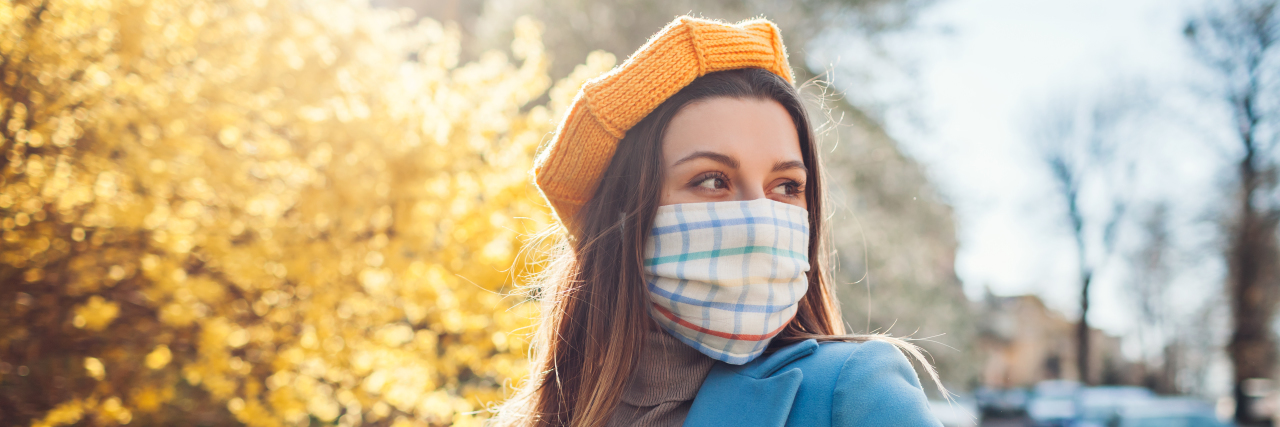When I first heard about the pandemic, I’ll admit that I was more concerned about my routine being messed up than about spreading the virus. After a few weeks, however, I realized how important it was to do my part in helping to contain the spread. One way I could do that was by wearing a mask.
As someone on the autism spectrum, I wasn’t sure how I’d handle wearing a face mask. Sometimes I would find it hard to breathe when I put one on, but I realized that I just needed to find the right one for me. So here are the six things that have helped me to wear a mask.
1. Pick a mask with a decent patterned fabric.
Since masks must be made out of 100% cotton in order to be effective, I don’t have much of a choice in that texture part. But I can decide on the colors or theme. I have found I tend to wear masks more if I like their theme and if they are in more subdued colors. While my favorite color is turquoise, I like to wear a mask that is a paler blue. (Sometimes the brighter colors are distracting to me.)
2. Figure out which style of mask and features work best.
There are rectangular pleated or gathered style masks that are easier for beginners to make at home, and shaped style masks designed to sit further from the face. There are masks that have clear windows in them so people could see my face while I’m wearing them. There are masks that have channels or pockets where I can switch out features such as a bendable nosepiece, filter, or ties. With all the different styles and patterns used to make masks, it might take a few tries before I find the winner!
3. Now I figure out how I want it to fit.
Do I need it more tightly over my nose? Is it too tight and it digs in? Or is it too loose and it’s sliding around too much? (If I’m using a mask with fabric ties, I need to tie it while my head is in its natural position and in my most common posture, otherwise I find it needs to be readjusted.) Maybe I like the elastic, but I need a large band so it won’t bother my ears. There are multiple tying techniques, so one of them (or even a combination) is bound to work!
4. I wash the mask with my favorite detergent.
I have an aversion to detergents that have added dyes and perfumes, so unscented detergent is best for me. This makes a lot of sense, though. The mask will be sitting against my nose and mouth, and I want to make sure it’s not going to have the scent of any harsh chemicals.
5. I make sure I am calm when I put it on my face.
I find it difficult to put a mask on after being extremely active, so now I plan ahead to make sure my body is relaxed and my breathing is regular. (It’s harder to wear a mask when I’m breathing quickly.)
6. Finally, if I find I may begin to struggle while wearing the mask, I will remove myself from the situation where it’s needed.
I’ll step outside for a few minutes to take a break. If I decide I cannot continue to wear my mask, I’ll go home.
This year has been challenging. Sometimes, wearing a mask can be challenging, too. But I know how important it is. And I’m ready for this pandemic to end, so that one day (hopefully) I won’t have to wear a mask anymore. Until then, I’m glad I’ve learned ways that make it easier to keep myself covered!
Getty image by Mary Violet.


